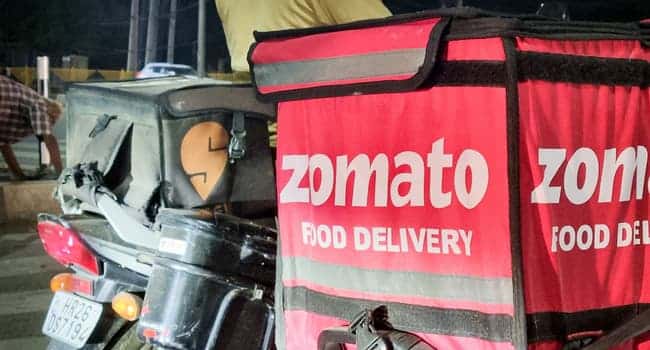Quick commerce is one of the sectors we covered on and off at Localogy Insider over the past year or so. And the news for this sector in 2022 was mostly bad.
Before we get into all that, let’s define what, exactly, is quick commerce.
Essentially quick commerce is the space that involves the delivery of snacks, sundries, and other goods to consumers quickly. For example, I need deodorant, ice cream, and cigarettes. And I need it all in the next 15 minutes. That rather odd consumer would pull out their smartphone and reach out to a service like GoPuff (in the U.S. ), or in parts of Europe perhaps it would be Gorillas. Or any of countless other solutions with names like Getir and Zapp, or so many others, living and dead.
The problem with this model is not that there aren’t enough urban (quick commerce is almost exclusively a city thing) consumers willing to pay a premium for the fast delivery of ice cream and Reese’s Peanut Butter Cups. The real problem is that the business model stinks. And that far too many me-too quick commerce brands popped up to chase this dubious path to wealth.
Here is how I framed it back in October.
This race to the fastest-available delivery of snacks and sundries helps explain why the quick commerce space consumes cash as voraciously as Mötley Crüe consumed cocaine.
Over the course of 2022, the quick commerce business began to unravel across the U.S., Europe, and other parts of the world. And the unraveling is largely driven by investors recoiling from quick commerce’s voracious appetite for cash.
Bad Business
Before we run the tape on quick commerce’s very bad year, let’s quickly recap why quick commerce is such a tough business. Essentially, quick commerce became a race to see who could offer the fastest delivery time on that bag full of ice cream, deodorant and smokes. By the end of this toxic competition, 15 minutes became the delivery time gold standard. That race became the instrument of quick commerce’s destruction, or at least of its restructuring.
In order to pull off a very short delivery time, quick commerce players have to build expensive infrastructure. They need expensive engineering talent to build and maintain a workable app. And they need to acquire a network of micro-warehouses to stage fast-moving goods in high-traffic zones so that when an order comes in it can be compiled and delivered within the promised delivery time. This soon turned quick commerce from a quirky startup idea into a cash-consuming monster.
And investors have been pulling away from quick commerce as a result. A recent report in Your Story says investment in the quick commerce sector went from $1.53 billion in 2021 down to $1.14 billion this year. The report cites data by research firm Tracxn.
That is still a lot of money. But it is down by more than 25% over the course of just one year. A pretty clear signal that investors are moving on. And given the current venture-funding environment, things are not looking good for money-losing businesses in 2023. And especially not for those with alarmingly high burn rates.
A Tough ’22
Ok, so what happened in 2022 that makes us believe this year may have marked the beginning of the end for quick commerce? Here is a partial list.
Back in May, we shared that Berlin-based Gorillas, a once high-flying multi-billion dollar quick commerce startup, faced a cash crisis and announced mass layoff after burning through piles of cash in its quest for European dominance in quick commerce. Gorillas laid off 300 in the spring, just months after raising $1 billion at a $3 billion valuation. This offers a sense of how much cash these quick commerce players consumed.
Earlier this month, Turkish quick commerce player Getir acquired Gorllias for $1.2 billion in a deal that is mostly made of equity (only $40 million was in cash). Note this is less than half of Gorillas’ peak valuation. Reportedly the combination of Getir and Gorillas will be worth $10 billion. Reportedly, job cuts are expected to soon follow this deal. Also, existing investors reportedly had to agree to pour another $100 million into Gorillas in order to get the Getir deal done.
The situation apparently isn’t much better among Gorillas’ European competitors.
A report this week on DW.com chronicles the collapse of Europe’s quick commerce industry and cites inflation as having a key role in dampening demand for quick commerce. Fair enough. But the industry’s fundamental flaws (terrible unit economics) seem independent of macro factors like inflation.
We also reported on the challenges that Philadelphia-based QC player GoPuff faced in 2022. GoPuff was founded in 2013 by college friends Rafael Ilishayev and Yakir Gola.
In October, for example, we learned that GoPuff had laid off 250 customer support staff (apparently via the dreaded Zoom mass firing method). This move apparently was a down payment on previously announced layoffs. The company has also reportedly shelved plans for an IPO.
A Rough 2023 Ahead?
So what promise does 2023 hold for quick commerce? Hard to say. It will not flourish as it has in recent years fueled by cheap capital. Rather, if the industry does survive, it will be smaller, more focused on unit economics, and more professionally run.
If you live in a big city and want to have ice cream and deodorant delivered to your apartment at some point in 2023, you will probably be able to do so. But it will likely cost more than it did this year.




